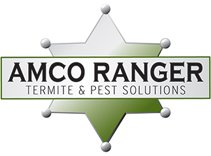The Ultimate Guide to Identifying Common Household Pests
Introduction to common household pests
Common household pests can be a nuisance and cause various problems in our homes. From tiny ants to pesky cockroaches, these unwelcome guests can contaminate our food, damage our property, and even pose health risks. In this ultimate guide, we will explore the different types of common household pests, their habits, and the signs to look out for. By understanding these pests, you will be equipped with the knowledge to identify and effectively deal with infestations, ensuring a pest-free and comfortable living environment for you and your family.

Common signs of pest infestation
Common signs of pest infestation can be easily overlooked, but it is crucial to identify them early to prevent further damage. One common sign is the presence of droppings or feces, which can indicate the presence of rodents or insects. Another sign is the presence of chewed or damaged materials, such as wires, fabrics, or wood, which can suggest the presence of pests that are actively searching for food or nesting materials. Additionally, unusual sounds or smells, such as scratching noises or a strong odor, can also be indicators of a pest infestation. By being aware of these signs, homeowners can take prompt action to address the problem and protect their homes from further damage.
Identifying ants and their behavior
Identifying ants and understanding their behavior is essential for effective pest control in your home. Ants are social insects that live in colonies, and there are many different species that can invade your living space. By knowing the specific characteristics of the ants you are dealing with, such as their size, color, and nesting habits, you can determine the most appropriate treatment methods. Additionally, understanding ant behavior, such as their foraging patterns and preferred food sources, can help you prevent future infestations and keep your home ant-free. With the right knowledge, you can confidently identify and address ant problems, ensuring a pest-free environment for you and your family.
Identifying cockroaches and their behavior
Identifying cockroaches and understanding their behavior is key to effectively managing and eliminating these common household pests. Cockroaches are nocturnal insects that are attracted to warmth, moisture, and food sources. They have a flat body shape, long antennae, and six legs. Different species of cockroaches have distinct physical characteristics and habits, such as the German cockroach’s ability to climb smooth surfaces and the American cockroach’s preference for damp areas. By familiarizing yourself with these details, you can accurately identify the type of cockroach infesting your home and implement targeted pest control strategies to keep them at bay.
Identifying rodents and their behavior
Identifying rodents and understanding their behavior is essential for effective pest control in your home. Rodents such as mice and rats can cause significant damage to your property and pose health risks to your family. By knowing how to identify these pests, you can take appropriate measures to prevent infestations and protect your home. Look out for signs such as droppings, gnaw marks, and the sound of scurrying in the walls. Understanding their behavior, such as their preference for dark and secluded areas, can help you target your pest control efforts and effectively eliminate these unwanted guests from your home.
Identifying bed bugs and their behavior
Identifying bed bugs and understanding their behavior is essential for effective pest control in your home. Bed bugs are small, oval-shaped insects that feed on human blood, typically during the night. They are expert hitchhikers and can easily infest your home by hiding in luggage, clothing, or furniture. Identifying bed bugs can be challenging as they are nocturnal and hide in cracks and crevices during the day. However, common signs of an infestation include small dark spots on your mattress or bedding, a sweet musty odor, and red, itchy bites on your skin. By knowing how to identify bed bugs and their behavior, you can take prompt action to eliminate these pesky pests and prevent further infestations.
Identifying termites and their behavior
Identifying termites and understanding their behavior is key to effectively dealing with an infestation and protecting your home. Termites are often mistaken for ants due to their similar size and appearance, but there are distinct differences. Unlike ants, termites have straight antennae, a thick waist, and equal-sized wings. They are also known for their destructive behavior, as they feed on wood and can cause significant damage to the structure of your home. Understanding the signs of a termite infestation, such as discarded wings, mud tubes, and hollow-sounding wood, can help you take prompt action to prevent further damage and ensure the long-term integrity of your property.
Identifying spiders and their behavior
Identifying spiders and understanding their behavior is key to effectively managing common household pests. With over 40,000 known species worldwide, spiders are incredibly diverse and can vary greatly in size, color, and web-building habits. By recognizing the specific characteristics of spiders, such as their number of eyes, leg arrangement, and web structure, you can accurately identify the species and determine whether it poses a threat or is beneficial to your home. Additionally, understanding spider behavior, such as their hunting techniques and preferred habitats, can help you implement targeted pest control measures and create a pest-free environment. By becoming knowledgeable about spiders, you can confidently navigate the world of household pests and ensure the well-being of your home and family.
Prevention and control methods for common household pests
Prevention and control methods are key in effectively managing common household pests. By implementing preventive measures such as sealing cracks and crevices, keeping food stored properly, and maintaining a clean living environment, you can significantly reduce the likelihood of pests entering your home. Additionally, utilizing control methods such as traps, baits, and insecticides can help eliminate existing infestations. It’s important to understand the behavior and habits of each pest to tailor your prevention and control strategies accordingly. With proper knowledge and proactive measures, you can successfully protect your home from common household pests and maintain a pest-free living environment.
Conclusion and final tips for dealing with household pests
After learning about the various common household pests and how to identify them, it is important to conclude with some final tips for dealing with these pesky intruders. Prevention is key when it comes to pest control. Keep your home clean and free of food crumbs, fix any leaky pipes or faucets, and seal any cracks or openings that pests may use to enter your home. Additionally, consider using natural deterrents such as peppermint oil or vinegar to repel pests. If you find yourself with a full-blown infestation, it is best to consult with a professional pest control service to ensure effective and safe removal. Remember, early detection and swift action are crucial in keeping your home pest-free and maintaining a healthy living environment.


